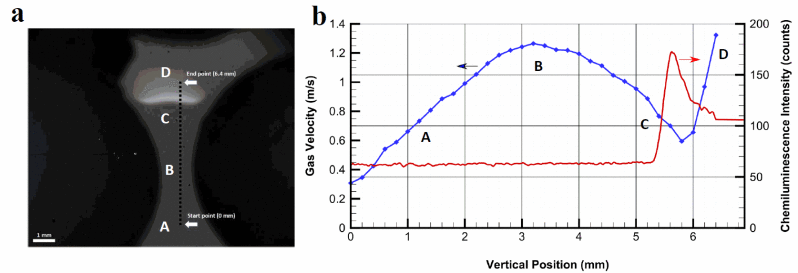Flame propagation in packed beds
Person in charge: Mohammadhassan Khodsiani
This project is part of the DFG-funded collaborative research center CRC/TR 287 on "Reacting and moving granular assemblies with gas flow".
Please click here to find more details on CRC/TR 287
Investigation of the flame propogation inside the packed-bed
In this work, the interaction between the particles of a packed bed reactor and a premixed flame propagating in between the particles is investigated. The experimental setup consists of a premixed slit burner, a co-flow and an array of cylinders resembling a packed bed but allowing for line-based optical diagnostics, shown in first figure. The cylinder arrangement is chosen to replicate the turns, contractions and expansion that spherical packed beds imposed to the flow.
Measurements include high-speed chemiluminescence imaging using a telecentric lens to monitor the two-dimensional flame front position under a variety of experimental conditions (cylinder temperature and inflow velocity). Laser Doppler velocimetry is used to measure the velocity field in between the particles and describe the influence of the cylinder thermal boundary condition on the local flame propagation speed. For each of the three cylinders surrounding the flame front, the flame to wall heat transfer rate is measured from the temperature increase of the coolant along each cylinder. Furthermore, the perimeter resolved surface temperature of the cylinders is measured using non-invasive phosphor thermometry to monitor the validity of the thermal boundary conditions.
